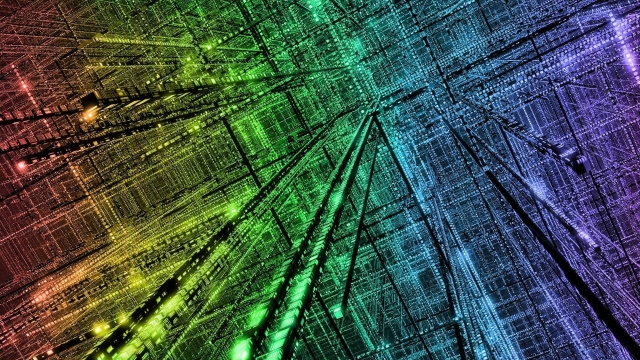
In an era where the lines between reality and fiction are increasingly blurred, the rise of deepfake technology has both fascinated and unsettled many. With the ability to manipulate and fabricate videos and images using artificial intelligence, deepfake technology has thrust us into uncharted territory. What once seemed like a distant concept from a sci-fi movie has become a disconcerting reality, leaving us questioning the authenticity of what we see before our eyes.
At its core, deepfake technology utilizes machine learning algorithms to analyze and manipulate existing footage, seamlessly replacing faces or even entire bodies with astonishing precision. The implications of this technology are immense, as it has the potential to not only deceive the unsuspecting eye but also to incite chaos, spread misinformation, and undermine trust in our visual media. The dystopian possibilities range from fake news scandals to political manipulation and even identity theft, amplifying our collective skepticism towards the authenticity of any digital content. As we dive deeper into the rapidly advancing world of AI, understanding the mechanisms behind deepfake technology becomes crucial in order to safeguard ourselves from grappling with a distorted version of reality.
Understanding Deepfake Technology
Deepfake technology is an artificial intelligence (AI) tool that makes it possible to manipulate or alter digital content, particularly images and videos, by replacing or superimposing someone’s face onto another person’s body. This innovative technology utilizes advanced machine learning algorithms to analyze and synthesize large datasets of images and videos, ultimately enabling the creation of highly realistic and believable fake content.
Deepfake technology works by employing generative adversarial networks (GANs) to generate and refine digital content. GANs consist of two main components: a generator and a discriminator. The generator is responsible for creating the fake content, while the discriminator evaluates and distinguishes between real and fake data. This iterative process allows the generator to improve over time, resulting in the production of highly convincing deepfakes.
The implications of deepfake technology are vast and far-reaching. While it offers exciting possibilities for entertainment and creative expression, there are concerns surrounding its potential misuse. Deepfakes can be exploited to spread misinformation, defame individuals, or even manipulate public opinion with fabricated evidence. As the technology continues to evolve and improve, it becomes increasingly challenging to discern between real and fake content, making it crucial to develop robust detection methods to mitigate the potential risks associated with deepfakes.
Understanding the fundamentals of deepfake technology is essential in order to navigate this evolving landscape effectively. By recognizing the underlying mechanisms and techniques employed by deepfakes, we can develop strategies to detect and counteract their negative effects, ensuring a safer and more trustworthy digital environment.
The Dangers of Deepfakes
Deepfake technology has brought about a wave of concern due to its potential dangers and implications. With the ability to manipulate and fabricate videos and images, deepfakes pose significant threats to various aspects of our society.
Firstly, the most immediate danger of deepfakes lies in the realm of misinformation and fake news. With the ease and sophistication of creating realistic deepfake content, it becomes increasingly challenging to discern between what is real and what is manipulated. This can lead to the spread of false narratives, malicious propaganda, and even incite violence or unrest within communities.
Moreover, deepfakes have the potential to undermine trust and credibility in various domains. Imagine a scenario where a high-ranking politician or business leader is depicted engaging in illegal or unethical activities in a deepfake video. Such fabricated evidence has the power to tarnish reputations and disrupt the stability of institutions. The more prevalent deepfake technology becomes, the harder it will be for society to discern genuine information from manipulated content.
Additionally, the impact of deepfakes extends beyond individuals and organizations. It poses a significant threat to privacy and consent. Deepfake technology enables anyone with access to a computer and the necessary software to falsely attribute someone’s image or voice to explicit, compromising, or embarrassing content. This not only violates personal boundaries but also opens doors to harassment, blackmail, and the erosion of trust between individuals.
It is crucial for us to understand and address the dangers of deepfakes proactively. Legislation and technological advancements are necessary to combat the malicious use of this technology and protect individuals, institutions, and the fabric of truth in our society.
Note: The above text is generated by an AI language model and may not necessarily reflect the opinions or beliefs of the writer. The aim is to provide a comprehensive understanding of the discussed topic.
Mitigating the Impact of Deepfakes
As the prevalence of deepfake technology continues to rise, it becomes crucial to develop effective strategies to mitigate its potentially damaging impact.
-
Raising Awareness: Education plays a vital role in combating the negative consequences of deepfakes. By increasing awareness about the existence and potential dangers of deepfake technology, individuals can be more cautious while consuming digital content. Recognizing the signs of manipulated videos or images can help people navigate the digital landscape more securely.
-
Technological Solutions: Developing advanced algorithms and tools to detect and authenticate deepfakes is another crucial step. By utilizing artificial intelligence and machine learning, researchers aim to create robust mechanisms capable of identifying and differentiating genuine content from deepfakes. Continued advancements in this field will be essential in staying one step ahead of the creators of manipulative content.
-
Collaborative Efforts: Addressing the challenges posed by deepfakes requires a collective response from various stakeholders. Governments, tech companies, and social media platforms should come together to establish stricter regulations and policies to combat the malicious use of deepfake technology. Cooperation between these entities can lead to more effective detection methods, stronger legal frameworks, and improved content moderation practices.
By adopting these strategies, we can hope to mitigate the impact of deepfakes and preserve the integrity of digital information. It is imperative that preventative measures continue to be developed and implemented in order to protect individuals, institutions, and society as a whole.


